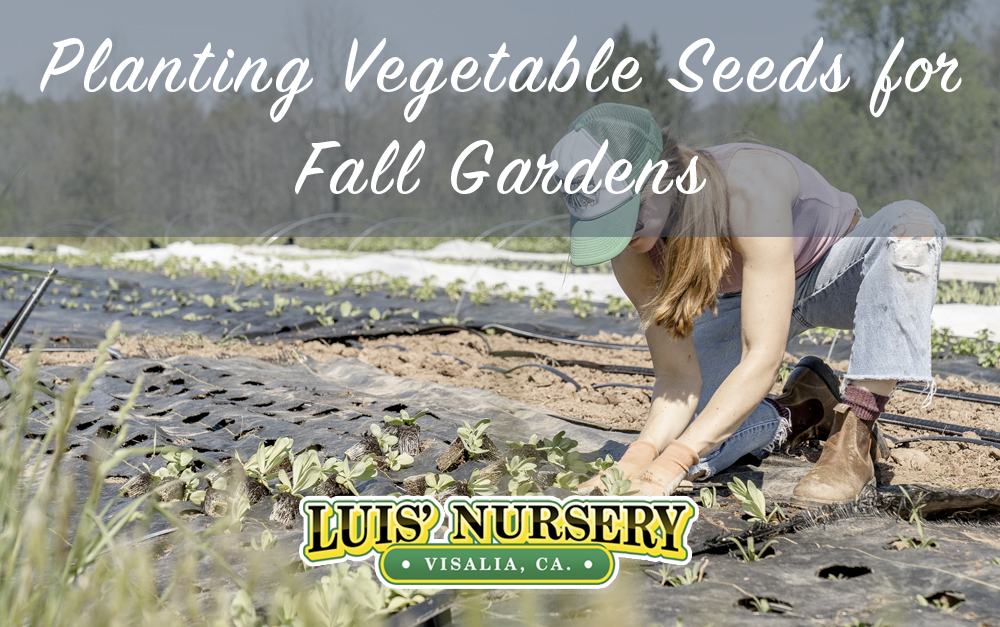Last month we discussed that now is the time to get your fall gardens prepped and ready to go. You don’t want to miss this critical timing. Late August and early September are the ideal time to start your fast-growing fall crops. Here in the San Joaquin and Central Valley we don’t have the same threat of frost as other areas, so we can plant with ease year-round. It’s the beginning of our second planting season.
Choose Full Sun
When deciding where to plant your autumn garden you’ll want to find the area with the most sun. You won’t want any structures or trees robbing your veggies of nutrients, water or sunlight. If you don’t have any garden space that fits your needs, you can consider planting in a raised bed. This will allow you the freedom to adjust the location and manage them easier in a smaller space.
Container Gardening
If you’ve chosen to container garden, you’ll want to make sure that you have plenty of soil and big pots. Your veggies are going to want a lot of room for their roots, so make sure you give them the space they need. When deciding which plants to use in your containers consider how much space the plant will need. Some plants need more room and would be less suitable in a container. You’ll want to consider how wide and tall they will grow. For example, lettuce and peas are happy in a container, but cauliflower and cabbage will feel crowded.
Take into consideration hardy and tender vegetables
Even though we don’t have frost issues in the San Joaquin valley, you will want to take into consideration those fragile and tender vegetables that need the warmest fall soil. Snap peas, sweet potatoes, eggplant, squash and pumpkin all need the warmest areas. You’ll also need to take special care of your lettuce, beets, carrots, chard, parsley, parsnips, broccoli, potatoes and cauliflower.
Hardy veggies such as onions, kale, kohlrabi, brussels sprouts, spinach, turnips, radishes, asparagus, and cabbage will thrive in the fall. You can also plant celery, endive, garlic, leeks, and shallots. I can already smell the winter soup cooking!
Plant from seeds or starters
The benefit of planting starters is that you have a leg up on growing time. Your plants will have a six-week head start! We should have starter plants ready by September. Make sure that you prepare your soil by breaking up the soil and clumps to a depth of 8-12 inches. Add any organic compost, manures, fertilizer, and minerals to your soil, and make sure that your soil is watered and moist for 2 days before planting.
You will want to plant more seeds than recommended, because not all of them will germinate. You can thin out your garden later once you see the young seedlings starting to appear. It may hurt you to rip out healthy young plants, but it’s important for the health of your fall garden. Planting your fall seeds and starters now will have your garden harvest ready by mid-November and sometimes earlier. If you need any seeds or starters, we are happy to help. Come on by and we’ll get you fixed up!

